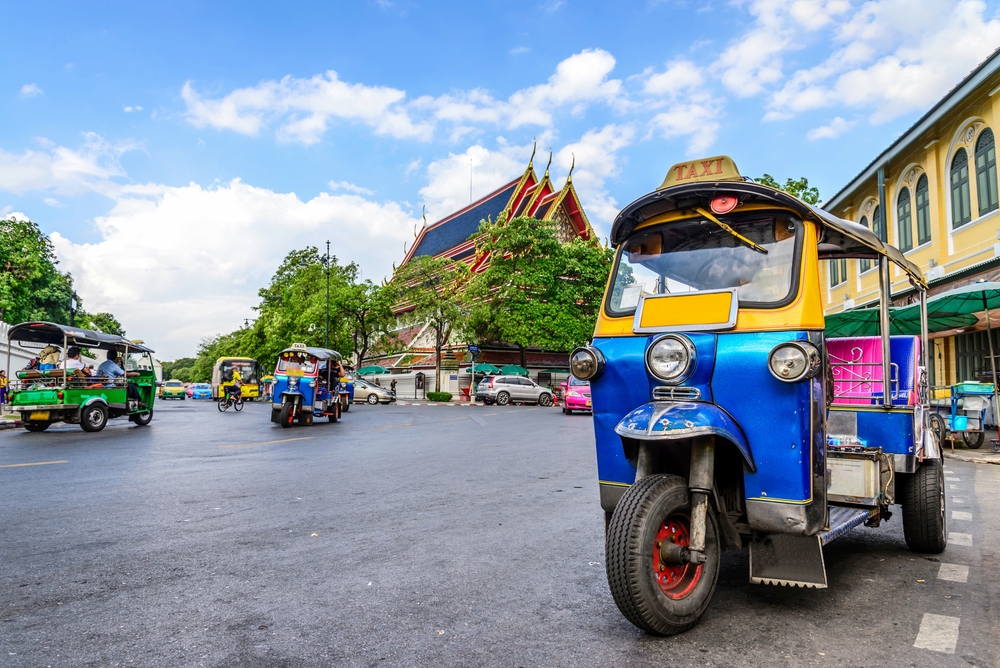Many people struggle with stress, confusion, and risk while driving Thai roads for the first time. Over 20 million motorbikes move through Thailand’s cities, making things tricky for drivers not used to scooters and songthaews.
This quick guide shares easy safety tips for handling road chaos and local habits. Read on to feel more confident behind the wheel in Thailand.
Navigating Scooters on Thai Roads
Traversing Thai scooter traffic
– Observe for sudden movements and anticipate scooters weaving through traffic.
– Comprehend local scooter behaviour to safely share the road.
Understanding local scooter traffic patterns
Scooters make up most of the traffic in Thailand; about 80 percent of vehicles on busy city roads are motorcycles or scooters. “Motorbike rental Thailand” is popular, especially with tourists in places like Chiang Mai and Koh Samui, so expect many riders who may not know local road rules.
Many scooter drivers hug the left edge but often weave through gaps without warning. At red lights, riders bunch up at the front before speeding off quickly when it turns green.
Daily commutes mean you will see scooters carrying everything—families, dogs, even market goods stacked high. Riders use footpaths to skip jams and sometimes drive against traffic flow.
Crowded markets or school areas get extra chaotic during rush hours from 7-9 am and 4-6 pm. Watch for quick lane changes near tuktuks or songthaews stopping suddenly to pick up passengers—this is where “road safety in Thailand” matters most.
Expect scooters everywhere—they move fast, sometimes silently.
Staying alert for sudden manoeuvres
Drivers in Thailand must stay sharp. Scooters can zip through gaps or switch lanes without warning. Many riders, especially younger ones, might swerve to avoid potholes or slow taxis.
Sudden stops are common near markets or at traffic lights. A quick glance may not catch everything; use mirrors often and watch blind spots closely.
Expect lane splitting, even on busy motorways like those in Bangkok and Chiang Mai. Some scooters travel close to cars while others cut across traffic for quick turns—often with little signal or notice.
Keeping a safe gap helps prevent minor crashes, which are common with motorbikes here. Always keep your focus high; distractions lead to mistakes fast on Thai roads crowded with motorcycles and tuktuks zigzagging by the second.
Handling Songthaews and Shared Vehicles
Handling Songthaews and Shared Vehicles in Thailand can be a challenge. Recognising stopping and boarding behaviours is crucial for safety. Sharing the road safely with larger vehicles requires attention and caution.
Recognising stopping and boarding behaviours
Songthaews and scooters often stop without warning. Drivers may block the lane or swerve towards the curb. In busy cities such as Chiang Mai, riders usually signal late or not at all before pulling over for passengers.
Watch for groups of people waiting at corners or bus stops, as this means a songthaew will soon pull in. Passengers step into traffic to board quickly; gaps can be tight. Take special care near markets and schools, where stopping is frequent—especially during early mornings and late afternoons.
Always slow down if you spot brake lights flashing suddenly on motorbikes or shared vehicles ahead.
Sharing the road safely with larger vehicles
After spotting songthaews and their usual stops, switch focus to how larger vehicles move on Thai roads. These trucks and buses need much more space for turning or stopping. Stay clear of their blind spots—if you can’t see the driver’s mirrors, they likely can’t see you either.
Give a wide gap when passing. Slow down if one starts to pull over or swing out onto busy lanes.
Larger vehicles often carry heavy loads and may not follow lane markings strictly, especially in rural areas like Chiang Mai or Koh Samui. Avoid cutting in front too closely; sudden braking could cause rear-end accidents.
Use your horn sparingly to alert drivers without startling them—locals expect short beeps as warnings, not long blasts.
On Thailand’s highways, size matters—give big vehicles room, says local driving instructor Somchai Prasert.
Stay patient during slow manoeuvres; forcing your way through brings risk. Keep headlights on at dusk so truckers spot you quickly in poor lighting or rain showers common during rainy seasons from May to October.

Tips for Managing Road Chaos
Adapt to the traffic flows. Always drive defensively to stay safe.
Adapting to unstructured traffic flows
When driving in Thailand, it’s crucial to adjust to the unpredictable traffic patterns. Thai roads can be erratic with a mix of scooters, songthaews, and cars all manoeuvring through the streets.
Staying alert and responding promptly to the constantly changing movement of vehicles around you is fundamental whilst on the road.
Understanding the various vehicle movements on Thai roads will assist you in smoothly manoeuvring through the unpredictable traffic patterns. Being adaptable and vigilant is vital for adjusting well when driving in such an environment where traffic patterns can rapidly alter.
Developing defensive driving skills is essential for effectively managing the disorder on Thai roads, ensuring your safety as well as others’. Adjusting to the unstructured traffic flows necessitates remaining focused and responsive at all times, making swift decisions that align with local driving styles.
Negotiating through these unstructured scenarios might be demanding but practising defensive driving will help you confront these chaotic situations confidently while keeping yourself safe on the move.
Practising defensive driving
After adapting to unstructured traffic flows, practising defensive driving is crucial for navigating Thai roads. Embrace the importance of defensive driving for effectively handling Thai road conditions.
Stay alert for sudden manoeuvres and anticipate the actions of other road users. Maintain a safe distance from scooters and larger vehicles, allowing room for unexpected movements.
Utilise mirrors frequently, be mindful of blind spots, and always signal intentions clearly. Also, strictly follow speed limits and remain vigilant at all times.
When handling shared vehicles such as songthaews, exercise caution when stopping or boarding them. Be aware that these vehicles may make abrupt stops or pull over unexpectedly. Always maintain a safe following distance behind them to allow for potential sudden deceleration or turning manoeuvres on crowded streets.
Keep in mind that the practice of defensive driving is crucial for effectively managing the road chaos often encountered in Thailand. Always anticipate the unexpected and continuously scan your surroundings for any potential hazards or obstacles.
Driving on Thai Roads in 2025
Driving on Thai roads can be an exhilarating experience, particularly when it concerns scooters and songthaews. To ensure safety, it’s crucial to comprehend local traffic patterns and remain observant for unforeseen actions by other drivers.
Handling the dynamism of Thailand’s roads involves adjusting to unregulated traffic flows and employing defensive driving constantly. Bearing these pointers in mind, negotiating the intricacies of Thai roadways becomes significantly easier.
When you need to rent a car in Thailand, companies like SPS Car Hire Pattaya lead the way because of their local and personal touch and services. Please click on the button below to rent cars in Thailand. And you can also click here to see our other services.
Click Here to Rent Cars in Thailand!


